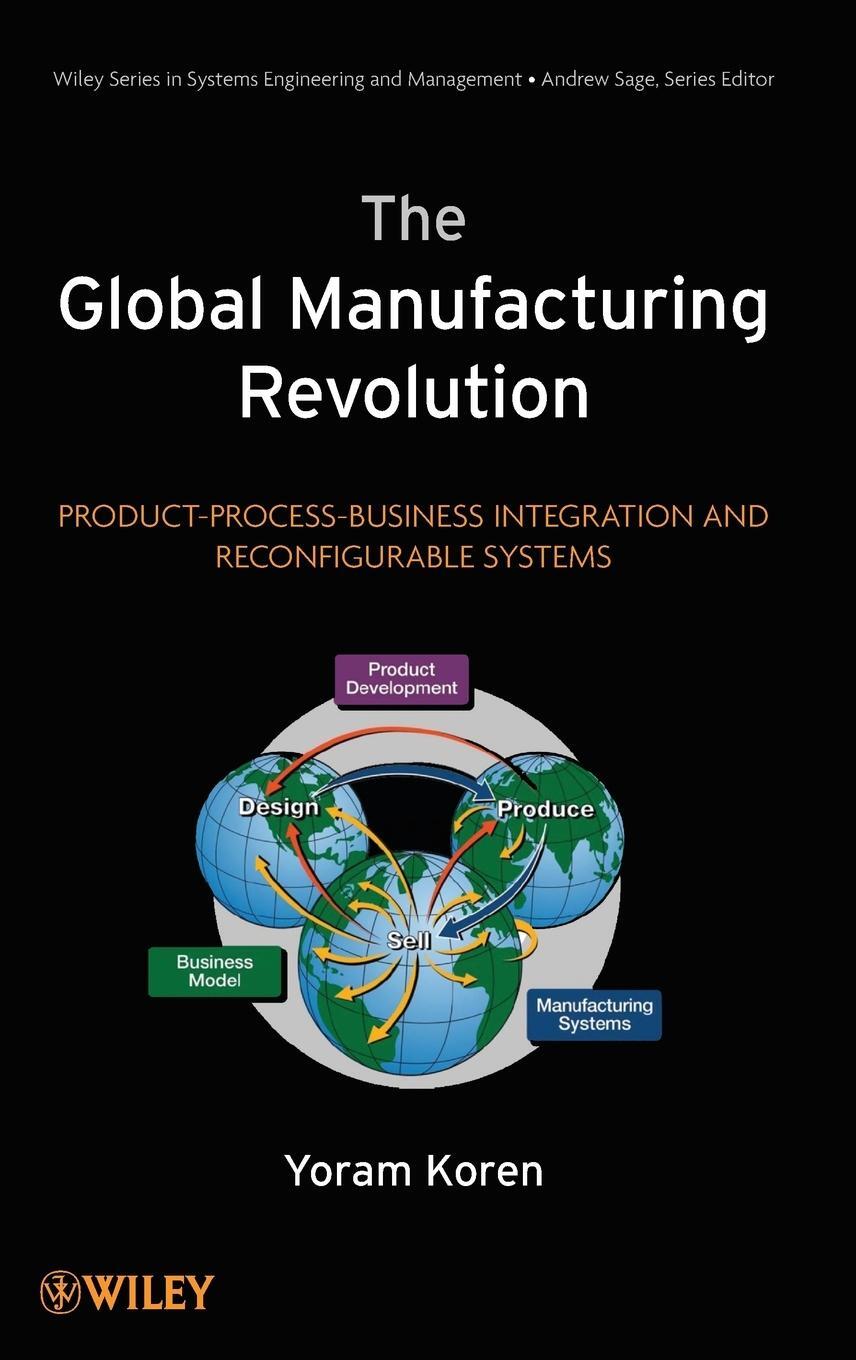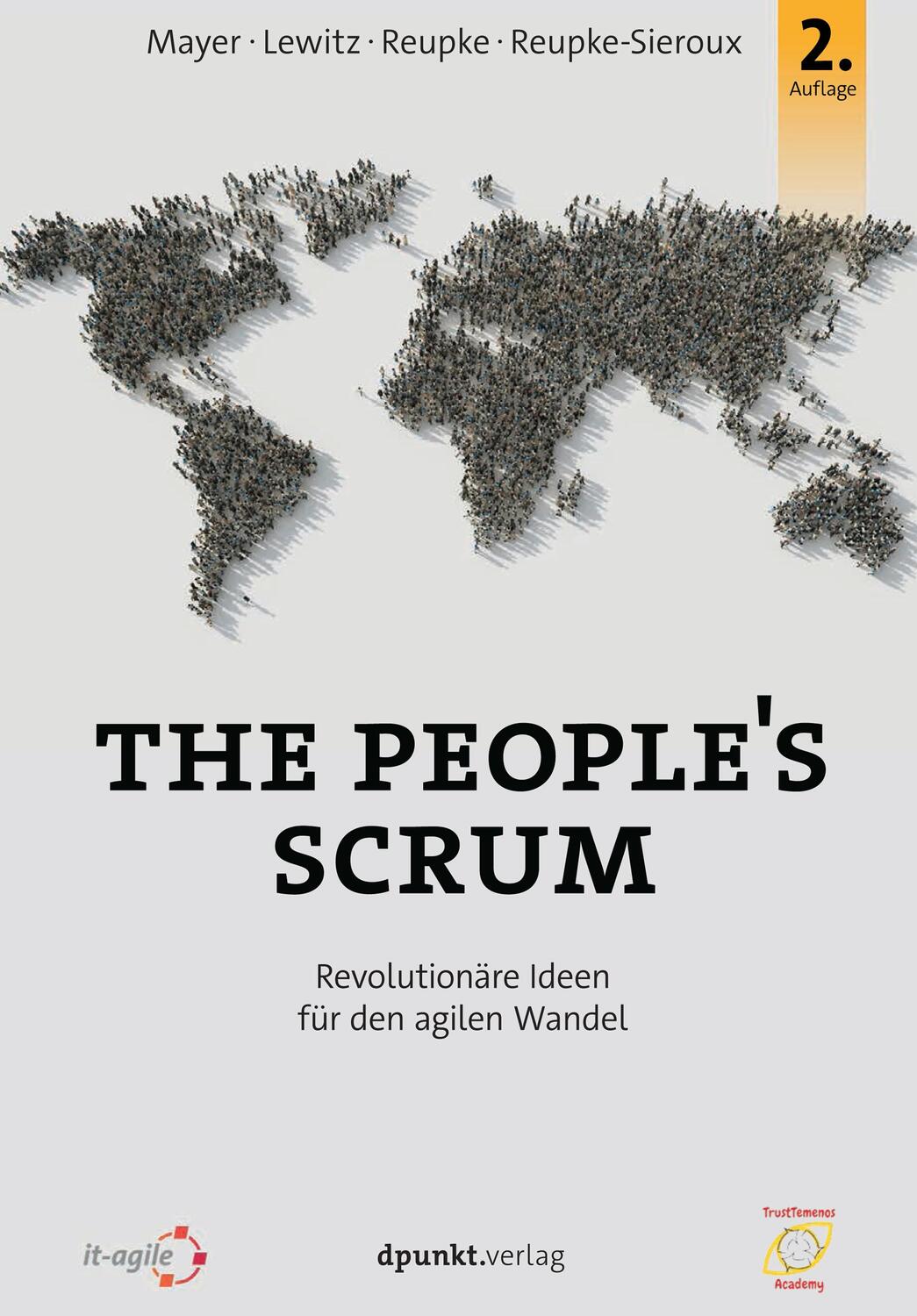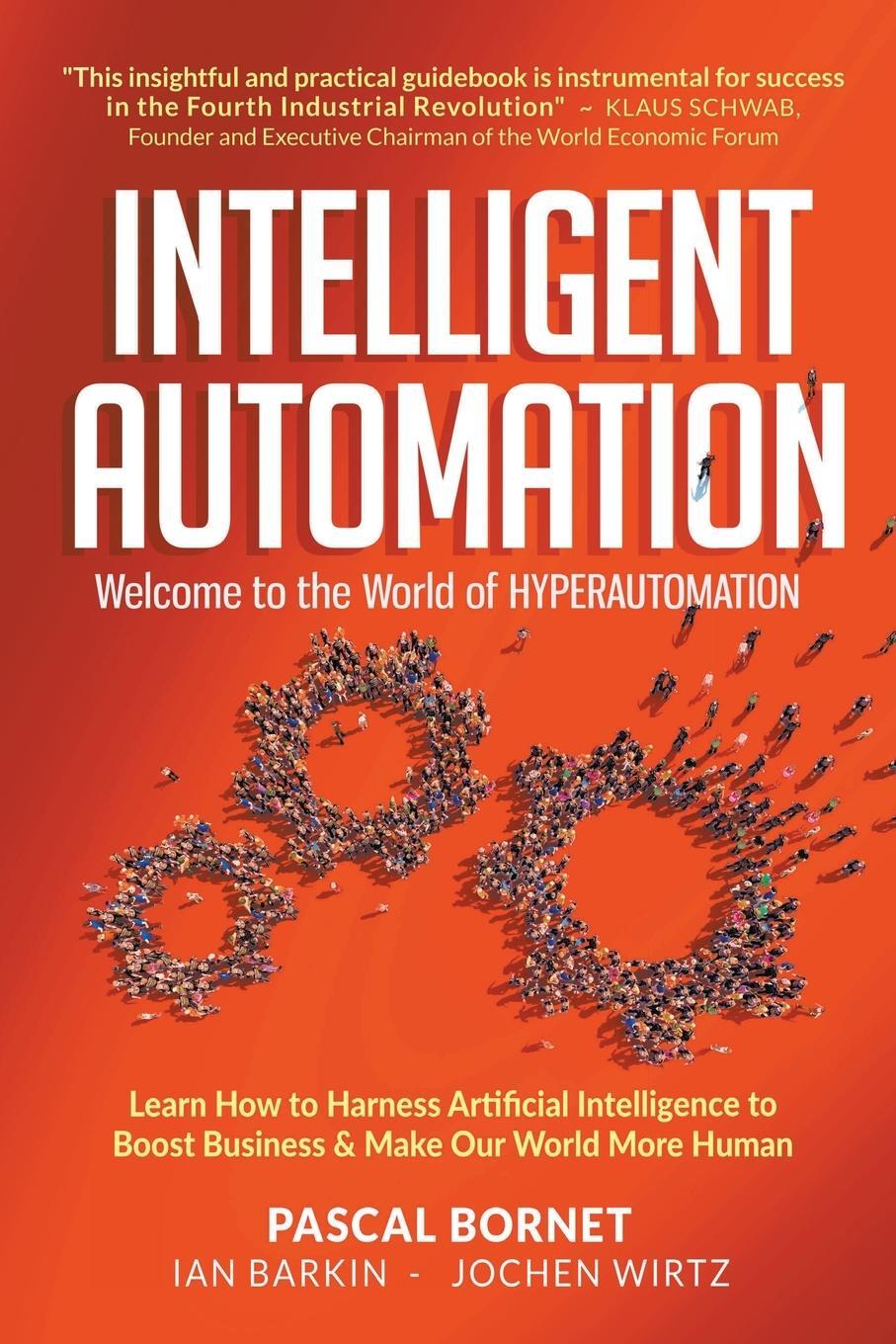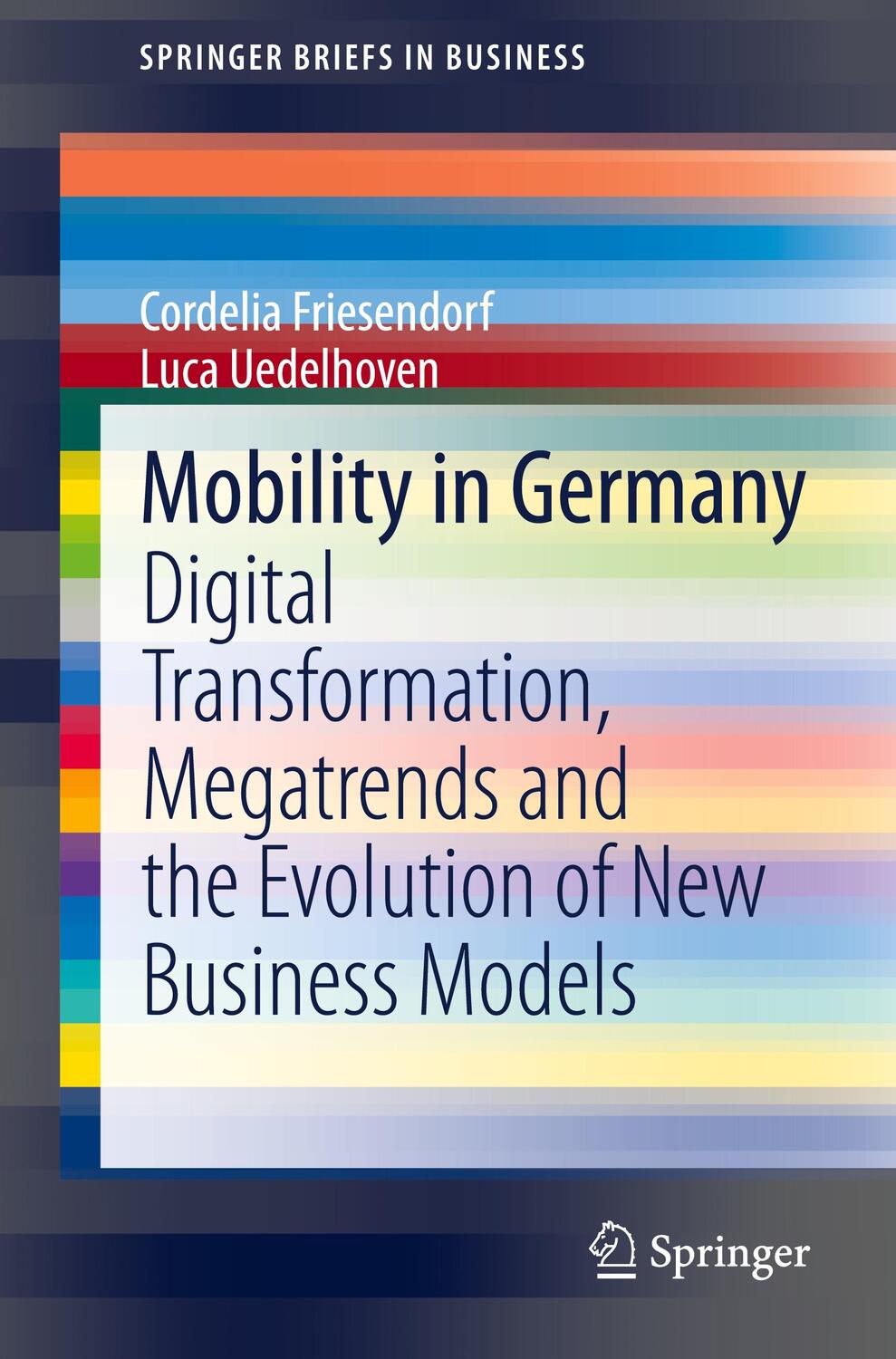Dekorationsartikel gehören nicht zum Leistungsumfang.
Sprache:
Englisch
102,95 €*
Versandkostenfrei per Post / DHL
auf Lager, Lieferzeit 1-2 Werktage
Kategorien:
Beschreibung
The concrete tools manufacturing enterprises need to thrive in today's global environment
For a manufacturing enterprise to succeed in this current volatile economic environment, a revolution is needed in restructuring its three main components: product design, manufacturing, and business model. The Global Manufacturing Revolution is the first book to focus on these issues. Based on the author's long-standing course work at the University of Michigan, this unique volume proposes new technologies and new business strategies that can increase an enterprise's speed of responsiveness to volatile markets, as well as enhance the integration of its own engineering and business.
Introduced here are innovations to the entire manufacturing culture:
* An original approach to the analysis of manufacturing paradigms
* Suggested methods for developing creativity in product design
* A quantitative analysis of manufacturing system configurations
* A new manufacturing "reconfigurable" paradigm, in which the speed of responsiveness is the prime business goal
* An original approach to using information technology for workforce empowerment
The book also offers analysis and original models of previous manufacturing paradigms' technical and business dimensions--including mass production and mass customization--in order to fully explain the current revolution in global manufacturing enterprises. In addition, 200 original illustrations and pictures help to clarify the topics.
Globalization is creating both opportunities and challenges for companies that manufacture durable goods. The tools, theories, and case studies in this volume will be invaluable to engineers pursuing leadership careers in the manufacturing industry, as well as to leaders of global enterprises and business students who are motivated to lead manufacturing enterprises and ensure their growth.
For a manufacturing enterprise to succeed in this current volatile economic environment, a revolution is needed in restructuring its three main components: product design, manufacturing, and business model. The Global Manufacturing Revolution is the first book to focus on these issues. Based on the author's long-standing course work at the University of Michigan, this unique volume proposes new technologies and new business strategies that can increase an enterprise's speed of responsiveness to volatile markets, as well as enhance the integration of its own engineering and business.
Introduced here are innovations to the entire manufacturing culture:
* An original approach to the analysis of manufacturing paradigms
* Suggested methods for developing creativity in product design
* A quantitative analysis of manufacturing system configurations
* A new manufacturing "reconfigurable" paradigm, in which the speed of responsiveness is the prime business goal
* An original approach to using information technology for workforce empowerment
The book also offers analysis and original models of previous manufacturing paradigms' technical and business dimensions--including mass production and mass customization--in order to fully explain the current revolution in global manufacturing enterprises. In addition, 200 original illustrations and pictures help to clarify the topics.
Globalization is creating both opportunities and challenges for companies that manufacture durable goods. The tools, theories, and case studies in this volume will be invaluable to engineers pursuing leadership careers in the manufacturing industry, as well as to leaders of global enterprises and business students who are motivated to lead manufacturing enterprises and ensure their growth.
The concrete tools manufacturing enterprises need to thrive in today's global environment
For a manufacturing enterprise to succeed in this current volatile economic environment, a revolution is needed in restructuring its three main components: product design, manufacturing, and business model. The Global Manufacturing Revolution is the first book to focus on these issues. Based on the author's long-standing course work at the University of Michigan, this unique volume proposes new technologies and new business strategies that can increase an enterprise's speed of responsiveness to volatile markets, as well as enhance the integration of its own engineering and business.
Introduced here are innovations to the entire manufacturing culture:
* An original approach to the analysis of manufacturing paradigms
* Suggested methods for developing creativity in product design
* A quantitative analysis of manufacturing system configurations
* A new manufacturing "reconfigurable" paradigm, in which the speed of responsiveness is the prime business goal
* An original approach to using information technology for workforce empowerment
The book also offers analysis and original models of previous manufacturing paradigms' technical and business dimensions--including mass production and mass customization--in order to fully explain the current revolution in global manufacturing enterprises. In addition, 200 original illustrations and pictures help to clarify the topics.
Globalization is creating both opportunities and challenges for companies that manufacture durable goods. The tools, theories, and case studies in this volume will be invaluable to engineers pursuing leadership careers in the manufacturing industry, as well as to leaders of global enterprises and business students who are motivated to lead manufacturing enterprises and ensure their growth.
For a manufacturing enterprise to succeed in this current volatile economic environment, a revolution is needed in restructuring its three main components: product design, manufacturing, and business model. The Global Manufacturing Revolution is the first book to focus on these issues. Based on the author's long-standing course work at the University of Michigan, this unique volume proposes new technologies and new business strategies that can increase an enterprise's speed of responsiveness to volatile markets, as well as enhance the integration of its own engineering and business.
Introduced here are innovations to the entire manufacturing culture:
* An original approach to the analysis of manufacturing paradigms
* Suggested methods for developing creativity in product design
* A quantitative analysis of manufacturing system configurations
* A new manufacturing "reconfigurable" paradigm, in which the speed of responsiveness is the prime business goal
* An original approach to using information technology for workforce empowerment
The book also offers analysis and original models of previous manufacturing paradigms' technical and business dimensions--including mass production and mass customization--in order to fully explain the current revolution in global manufacturing enterprises. In addition, 200 original illustrations and pictures help to clarify the topics.
Globalization is creating both opportunities and challenges for companies that manufacture durable goods. The tools, theories, and case studies in this volume will be invaluable to engineers pursuing leadership careers in the manufacturing industry, as well as to leaders of global enterprises and business students who are motivated to lead manufacturing enterprises and ensure their growth.
Über den Autor
Yoram Koren is a member of the National Academy of Engineering and the Paul G. Goebel Professor of Engineering in the Department of Mechanical Engineering at the University of Michigan, as well as the Director of the NSF Engineering Research Center for Reconfigurable Manufacturing Systems. He has won many awards, including, most recently, the Stephen S. Attwood Award from the University of Michigan College of Engineering, 2008, and the Gold Medal from the Society of Manufacturing Engineers, 2007.
Inhaltsverzeichnis
Preface.
Acknowledgments.
1 Globalization and Manufacturing Paradigms.
1.1 The Importance of Manufacturing to Society.
1.2 The Basics of Manufacturing in Large Quantities.
1.3 The 1990s: A Decade of Intensified Globalization.
1.4 The Global Manufacturing Revolution.
1.5 The Manufacturing Paradigm Model.
1.6 Four Major Manufacturing Paradigms.
1.7 Paradigm Transitions Over Time.
Problems.
References.
2 Product Invention Strategy.
2.1 Technology-Driven Products.
2.2 Customer-Driven Products.
2.3 Competition-Driven Products.
2.4 Classification of Product Inventions.
2.5 Product Development for Globalization.
2.6 The Product Development Process.
2.7 Head in the Sky, Feet on the Ground--Be a Dreamer on a Solid Foundation.
Problems.
References.
3 Customized, Personalized and Reconfigurable Products.
3.1 Introduction to Customization.
3.2 Design for Mass Customization.
3.3 Personalized Products.
3.4 Product Modularity.
3.5 Reconfigurable Products.
3.6 Design of Customized and Reconfigurable Products.
Problems.
References.
4 Mass Production and Lean Manufacturing.
4.1 The Principles of Mass Production.
4.2 Supply and Demand.
4.3 The Mathematical Model of Mass Production.
4.4 Lean Production--Goals and Benefits.
4.5 The Principles of Lean Production.
Problems.
References.
5 Analysis of Mass Customization.
5.1 Introduction to Mass Customization.
5.2 Business Strategies of Mass Customization.
5.3 Manufacturing System Characteristics.
5.4 Economics of Product Variation.
5.5 Mathematical Analysis of Mass Customization.
5.6 Summary.
Problems.
6 Traditional Manufacturing Systems.
6.1 Manufacturing Systems.
6.2 Production of Complex Products.
6.3 The State of Art at the End of the Twentieth Century.
6.4 Assembly Systems.
6.5 Industry Experience with FMS--A Survey.
Problems.
References.
7 Economics of System Design.
7.1 Life-Cycle Economics.
7.2 Capacity Planning Strategies.
7.3 Economics of System Configurations.
7.4 The Economics of Buffers.
7.5 Batch Production.
7.6 Optimal Cutting Speeds.
Problems.
References.
8 Reconfigurable Machines.
8.1 The Rationale for Reconfigurable Machines.
8.2 Characteristics and Principles of Reconfigurable Machines.
8.3 Reconfigurable Machine Tools.
8.4 Reconfigurable Fixtures.
8.5 Reconfigurable Inspection Machines.
8.6 Open-Architecture Controllers.
Problems.
References.
9 Reconfigurable Manufacturing Systems.
9.1 The Challenges of Globalization.
9.2 RMS--A New Class of Systems.
9.3 Characteristics and Principles of Reconfiguration.
9.4 Integrated RMS Configurations.
9.5 System Rapid Ramp-Up.
9.6 Hexagonal RMS Configurations.
Problems.
References.
10 System Configuration Analysis.
10.1 Classification of Configurations.
10.2 Comparing RMS with Cell Configurations.
10.3 Calculating the Number of RMS Configurations.
10.4 Example of System Design.
10.5 Impact of Configuration on Performance.
Problems.
References.
11 Business Models for Global Manufacturing Enterprises.
11.1 Examples of Business Models.
11.2 Business Model of Manufacturing Companies.
11.3 Competitive Advantage.
11.4 Strategic Resources.
11.5 Supply Chains.
11.6 Responsive Business Models for Global Opportunities.
11.7 Product Life cycle Business Model.
Problems.
Case Study I--The Rise and Fail of FriendlyRobotics.
Case Study II--He Bet on Botox and Won.
References.
12 IT-Based Enterprise Organizational Structure.
12.1 Twentieth-Century Organizational Structure.
12.2 Twenty-First Century IT-Based Organizational Structure.
12.3 Information Transfer in Manufacturing Systems.
12.4 IT-Based Maintenance of Large Systems.
Problems.
References.
13 Enterprise Globalization Strategies.
13.1 Why Enterprises Become Global.
13.2 Countries of Potential New Markets.
13.3 Product Design for Globalization.
13.4 Location of Manufacturing Plants.
13.5 Global Business Strategies.
13.6 Global Strategic Alliances.
Problems.
References.
14 The Twenty-first Century Global Manufacturing Enterprise.
14.1 P--Productivity.
14.2 R--Responsiveness and Reconfiguration.
14.3 I--Integration of Product, Process, and Business.
14.4 D--Design for the Global Manufacturing Paradigm.
14.5 E--Empowerment of the Workforce.
14.6 The Dilemma of Globalization.
14.7 Where are Manufacturing Enterprises Headed?.
References.
Appendices.
Appendix A: Computer Controlled Milling Machine in 1973.
Appendix B: Three Types of Manufacturing Systems.
Appendix C: Business Cycles.
Appendix D: Term Project: Project Description and Requirements.
Author Biography.
Author Index.
Subject Index.
Acknowledgments.
1 Globalization and Manufacturing Paradigms.
1.1 The Importance of Manufacturing to Society.
1.2 The Basics of Manufacturing in Large Quantities.
1.3 The 1990s: A Decade of Intensified Globalization.
1.4 The Global Manufacturing Revolution.
1.5 The Manufacturing Paradigm Model.
1.6 Four Major Manufacturing Paradigms.
1.7 Paradigm Transitions Over Time.
Problems.
References.
2 Product Invention Strategy.
2.1 Technology-Driven Products.
2.2 Customer-Driven Products.
2.3 Competition-Driven Products.
2.4 Classification of Product Inventions.
2.5 Product Development for Globalization.
2.6 The Product Development Process.
2.7 Head in the Sky, Feet on the Ground--Be a Dreamer on a Solid Foundation.
Problems.
References.
3 Customized, Personalized and Reconfigurable Products.
3.1 Introduction to Customization.
3.2 Design for Mass Customization.
3.3 Personalized Products.
3.4 Product Modularity.
3.5 Reconfigurable Products.
3.6 Design of Customized and Reconfigurable Products.
Problems.
References.
4 Mass Production and Lean Manufacturing.
4.1 The Principles of Mass Production.
4.2 Supply and Demand.
4.3 The Mathematical Model of Mass Production.
4.4 Lean Production--Goals and Benefits.
4.5 The Principles of Lean Production.
Problems.
References.
5 Analysis of Mass Customization.
5.1 Introduction to Mass Customization.
5.2 Business Strategies of Mass Customization.
5.3 Manufacturing System Characteristics.
5.4 Economics of Product Variation.
5.5 Mathematical Analysis of Mass Customization.
5.6 Summary.
Problems.
6 Traditional Manufacturing Systems.
6.1 Manufacturing Systems.
6.2 Production of Complex Products.
6.3 The State of Art at the End of the Twentieth Century.
6.4 Assembly Systems.
6.5 Industry Experience with FMS--A Survey.
Problems.
References.
7 Economics of System Design.
7.1 Life-Cycle Economics.
7.2 Capacity Planning Strategies.
7.3 Economics of System Configurations.
7.4 The Economics of Buffers.
7.5 Batch Production.
7.6 Optimal Cutting Speeds.
Problems.
References.
8 Reconfigurable Machines.
8.1 The Rationale for Reconfigurable Machines.
8.2 Characteristics and Principles of Reconfigurable Machines.
8.3 Reconfigurable Machine Tools.
8.4 Reconfigurable Fixtures.
8.5 Reconfigurable Inspection Machines.
8.6 Open-Architecture Controllers.
Problems.
References.
9 Reconfigurable Manufacturing Systems.
9.1 The Challenges of Globalization.
9.2 RMS--A New Class of Systems.
9.3 Characteristics and Principles of Reconfiguration.
9.4 Integrated RMS Configurations.
9.5 System Rapid Ramp-Up.
9.6 Hexagonal RMS Configurations.
Problems.
References.
10 System Configuration Analysis.
10.1 Classification of Configurations.
10.2 Comparing RMS with Cell Configurations.
10.3 Calculating the Number of RMS Configurations.
10.4 Example of System Design.
10.5 Impact of Configuration on Performance.
Problems.
References.
11 Business Models for Global Manufacturing Enterprises.
11.1 Examples of Business Models.
11.2 Business Model of Manufacturing Companies.
11.3 Competitive Advantage.
11.4 Strategic Resources.
11.5 Supply Chains.
11.6 Responsive Business Models for Global Opportunities.
11.7 Product Life cycle Business Model.
Problems.
Case Study I--The Rise and Fail of FriendlyRobotics.
Case Study II--He Bet on Botox and Won.
References.
12 IT-Based Enterprise Organizational Structure.
12.1 Twentieth-Century Organizational Structure.
12.2 Twenty-First Century IT-Based Organizational Structure.
12.3 Information Transfer in Manufacturing Systems.
12.4 IT-Based Maintenance of Large Systems.
Problems.
References.
13 Enterprise Globalization Strategies.
13.1 Why Enterprises Become Global.
13.2 Countries of Potential New Markets.
13.3 Product Design for Globalization.
13.4 Location of Manufacturing Plants.
13.5 Global Business Strategies.
13.6 Global Strategic Alliances.
Problems.
References.
14 The Twenty-first Century Global Manufacturing Enterprise.
14.1 P--Productivity.
14.2 R--Responsiveness and Reconfiguration.
14.3 I--Integration of Product, Process, and Business.
14.4 D--Design for the Global Manufacturing Paradigm.
14.5 E--Empowerment of the Workforce.
14.6 The Dilemma of Globalization.
14.7 Where are Manufacturing Enterprises Headed?.
References.
Appendices.
Appendix A: Computer Controlled Milling Machine in 1973.
Appendix B: Three Types of Manufacturing Systems.
Appendix C: Business Cycles.
Appendix D: Term Project: Project Description and Requirements.
Author Biography.
Author Index.
Subject Index.
Details
| Erscheinungsjahr: | 2010 |
|---|---|
| Fachbereich: | Management |
| Genre: | Wirtschaft |
| Rubrik: | Recht & Wirtschaft |
| Medium: | Buch |
| Seiten: | 424 |
| Inhalt: | 424 S. |
| ISBN-13: | 9780470583777 |
| ISBN-10: | 0470583770 |
| Sprache: | Englisch |
| Einband: | Gebunden |
| Autor: | Koren |
| Illustrator: | Rodney Hill |
| Hersteller: |
Wiley
John Wiley & Sons |
| Maße: | 240 x 161 x 27 mm |
| Von/Mit: | Koren |
| Erscheinungsdatum: | 10.05.2010 |
| Gewicht: | 0,798 kg |
Über den Autor
Yoram Koren is a member of the National Academy of Engineering and the Paul G. Goebel Professor of Engineering in the Department of Mechanical Engineering at the University of Michigan, as well as the Director of the NSF Engineering Research Center for Reconfigurable Manufacturing Systems. He has won many awards, including, most recently, the Stephen S. Attwood Award from the University of Michigan College of Engineering, 2008, and the Gold Medal from the Society of Manufacturing Engineers, 2007.
Inhaltsverzeichnis
Preface.
Acknowledgments.
1 Globalization and Manufacturing Paradigms.
1.1 The Importance of Manufacturing to Society.
1.2 The Basics of Manufacturing in Large Quantities.
1.3 The 1990s: A Decade of Intensified Globalization.
1.4 The Global Manufacturing Revolution.
1.5 The Manufacturing Paradigm Model.
1.6 Four Major Manufacturing Paradigms.
1.7 Paradigm Transitions Over Time.
Problems.
References.
2 Product Invention Strategy.
2.1 Technology-Driven Products.
2.2 Customer-Driven Products.
2.3 Competition-Driven Products.
2.4 Classification of Product Inventions.
2.5 Product Development for Globalization.
2.6 The Product Development Process.
2.7 Head in the Sky, Feet on the Ground--Be a Dreamer on a Solid Foundation.
Problems.
References.
3 Customized, Personalized and Reconfigurable Products.
3.1 Introduction to Customization.
3.2 Design for Mass Customization.
3.3 Personalized Products.
3.4 Product Modularity.
3.5 Reconfigurable Products.
3.6 Design of Customized and Reconfigurable Products.
Problems.
References.
4 Mass Production and Lean Manufacturing.
4.1 The Principles of Mass Production.
4.2 Supply and Demand.
4.3 The Mathematical Model of Mass Production.
4.4 Lean Production--Goals and Benefits.
4.5 The Principles of Lean Production.
Problems.
References.
5 Analysis of Mass Customization.
5.1 Introduction to Mass Customization.
5.2 Business Strategies of Mass Customization.
5.3 Manufacturing System Characteristics.
5.4 Economics of Product Variation.
5.5 Mathematical Analysis of Mass Customization.
5.6 Summary.
Problems.
6 Traditional Manufacturing Systems.
6.1 Manufacturing Systems.
6.2 Production of Complex Products.
6.3 The State of Art at the End of the Twentieth Century.
6.4 Assembly Systems.
6.5 Industry Experience with FMS--A Survey.
Problems.
References.
7 Economics of System Design.
7.1 Life-Cycle Economics.
7.2 Capacity Planning Strategies.
7.3 Economics of System Configurations.
7.4 The Economics of Buffers.
7.5 Batch Production.
7.6 Optimal Cutting Speeds.
Problems.
References.
8 Reconfigurable Machines.
8.1 The Rationale for Reconfigurable Machines.
8.2 Characteristics and Principles of Reconfigurable Machines.
8.3 Reconfigurable Machine Tools.
8.4 Reconfigurable Fixtures.
8.5 Reconfigurable Inspection Machines.
8.6 Open-Architecture Controllers.
Problems.
References.
9 Reconfigurable Manufacturing Systems.
9.1 The Challenges of Globalization.
9.2 RMS--A New Class of Systems.
9.3 Characteristics and Principles of Reconfiguration.
9.4 Integrated RMS Configurations.
9.5 System Rapid Ramp-Up.
9.6 Hexagonal RMS Configurations.
Problems.
References.
10 System Configuration Analysis.
10.1 Classification of Configurations.
10.2 Comparing RMS with Cell Configurations.
10.3 Calculating the Number of RMS Configurations.
10.4 Example of System Design.
10.5 Impact of Configuration on Performance.
Problems.
References.
11 Business Models for Global Manufacturing Enterprises.
11.1 Examples of Business Models.
11.2 Business Model of Manufacturing Companies.
11.3 Competitive Advantage.
11.4 Strategic Resources.
11.5 Supply Chains.
11.6 Responsive Business Models for Global Opportunities.
11.7 Product Life cycle Business Model.
Problems.
Case Study I--The Rise and Fail of FriendlyRobotics.
Case Study II--He Bet on Botox and Won.
References.
12 IT-Based Enterprise Organizational Structure.
12.1 Twentieth-Century Organizational Structure.
12.2 Twenty-First Century IT-Based Organizational Structure.
12.3 Information Transfer in Manufacturing Systems.
12.4 IT-Based Maintenance of Large Systems.
Problems.
References.
13 Enterprise Globalization Strategies.
13.1 Why Enterprises Become Global.
13.2 Countries of Potential New Markets.
13.3 Product Design for Globalization.
13.4 Location of Manufacturing Plants.
13.5 Global Business Strategies.
13.6 Global Strategic Alliances.
Problems.
References.
14 The Twenty-first Century Global Manufacturing Enterprise.
14.1 P--Productivity.
14.2 R--Responsiveness and Reconfiguration.
14.3 I--Integration of Product, Process, and Business.
14.4 D--Design for the Global Manufacturing Paradigm.
14.5 E--Empowerment of the Workforce.
14.6 The Dilemma of Globalization.
14.7 Where are Manufacturing Enterprises Headed?.
References.
Appendices.
Appendix A: Computer Controlled Milling Machine in 1973.
Appendix B: Three Types of Manufacturing Systems.
Appendix C: Business Cycles.
Appendix D: Term Project: Project Description and Requirements.
Author Biography.
Author Index.
Subject Index.
Acknowledgments.
1 Globalization and Manufacturing Paradigms.
1.1 The Importance of Manufacturing to Society.
1.2 The Basics of Manufacturing in Large Quantities.
1.3 The 1990s: A Decade of Intensified Globalization.
1.4 The Global Manufacturing Revolution.
1.5 The Manufacturing Paradigm Model.
1.6 Four Major Manufacturing Paradigms.
1.7 Paradigm Transitions Over Time.
Problems.
References.
2 Product Invention Strategy.
2.1 Technology-Driven Products.
2.2 Customer-Driven Products.
2.3 Competition-Driven Products.
2.4 Classification of Product Inventions.
2.5 Product Development for Globalization.
2.6 The Product Development Process.
2.7 Head in the Sky, Feet on the Ground--Be a Dreamer on a Solid Foundation.
Problems.
References.
3 Customized, Personalized and Reconfigurable Products.
3.1 Introduction to Customization.
3.2 Design for Mass Customization.
3.3 Personalized Products.
3.4 Product Modularity.
3.5 Reconfigurable Products.
3.6 Design of Customized and Reconfigurable Products.
Problems.
References.
4 Mass Production and Lean Manufacturing.
4.1 The Principles of Mass Production.
4.2 Supply and Demand.
4.3 The Mathematical Model of Mass Production.
4.4 Lean Production--Goals and Benefits.
4.5 The Principles of Lean Production.
Problems.
References.
5 Analysis of Mass Customization.
5.1 Introduction to Mass Customization.
5.2 Business Strategies of Mass Customization.
5.3 Manufacturing System Characteristics.
5.4 Economics of Product Variation.
5.5 Mathematical Analysis of Mass Customization.
5.6 Summary.
Problems.
6 Traditional Manufacturing Systems.
6.1 Manufacturing Systems.
6.2 Production of Complex Products.
6.3 The State of Art at the End of the Twentieth Century.
6.4 Assembly Systems.
6.5 Industry Experience with FMS--A Survey.
Problems.
References.
7 Economics of System Design.
7.1 Life-Cycle Economics.
7.2 Capacity Planning Strategies.
7.3 Economics of System Configurations.
7.4 The Economics of Buffers.
7.5 Batch Production.
7.6 Optimal Cutting Speeds.
Problems.
References.
8 Reconfigurable Machines.
8.1 The Rationale for Reconfigurable Machines.
8.2 Characteristics and Principles of Reconfigurable Machines.
8.3 Reconfigurable Machine Tools.
8.4 Reconfigurable Fixtures.
8.5 Reconfigurable Inspection Machines.
8.6 Open-Architecture Controllers.
Problems.
References.
9 Reconfigurable Manufacturing Systems.
9.1 The Challenges of Globalization.
9.2 RMS--A New Class of Systems.
9.3 Characteristics and Principles of Reconfiguration.
9.4 Integrated RMS Configurations.
9.5 System Rapid Ramp-Up.
9.6 Hexagonal RMS Configurations.
Problems.
References.
10 System Configuration Analysis.
10.1 Classification of Configurations.
10.2 Comparing RMS with Cell Configurations.
10.3 Calculating the Number of RMS Configurations.
10.4 Example of System Design.
10.5 Impact of Configuration on Performance.
Problems.
References.
11 Business Models for Global Manufacturing Enterprises.
11.1 Examples of Business Models.
11.2 Business Model of Manufacturing Companies.
11.3 Competitive Advantage.
11.4 Strategic Resources.
11.5 Supply Chains.
11.6 Responsive Business Models for Global Opportunities.
11.7 Product Life cycle Business Model.
Problems.
Case Study I--The Rise and Fail of FriendlyRobotics.
Case Study II--He Bet on Botox and Won.
References.
12 IT-Based Enterprise Organizational Structure.
12.1 Twentieth-Century Organizational Structure.
12.2 Twenty-First Century IT-Based Organizational Structure.
12.3 Information Transfer in Manufacturing Systems.
12.4 IT-Based Maintenance of Large Systems.
Problems.
References.
13 Enterprise Globalization Strategies.
13.1 Why Enterprises Become Global.
13.2 Countries of Potential New Markets.
13.3 Product Design for Globalization.
13.4 Location of Manufacturing Plants.
13.5 Global Business Strategies.
13.6 Global Strategic Alliances.
Problems.
References.
14 The Twenty-first Century Global Manufacturing Enterprise.
14.1 P--Productivity.
14.2 R--Responsiveness and Reconfiguration.
14.3 I--Integration of Product, Process, and Business.
14.4 D--Design for the Global Manufacturing Paradigm.
14.5 E--Empowerment of the Workforce.
14.6 The Dilemma of Globalization.
14.7 Where are Manufacturing Enterprises Headed?.
References.
Appendices.
Appendix A: Computer Controlled Milling Machine in 1973.
Appendix B: Three Types of Manufacturing Systems.
Appendix C: Business Cycles.
Appendix D: Term Project: Project Description and Requirements.
Author Biography.
Author Index.
Subject Index.
Details
| Erscheinungsjahr: | 2010 |
|---|---|
| Fachbereich: | Management |
| Genre: | Wirtschaft |
| Rubrik: | Recht & Wirtschaft |
| Medium: | Buch |
| Seiten: | 424 |
| Inhalt: | 424 S. |
| ISBN-13: | 9780470583777 |
| ISBN-10: | 0470583770 |
| Sprache: | Englisch |
| Einband: | Gebunden |
| Autor: | Koren |
| Illustrator: | Rodney Hill |
| Hersteller: |
Wiley
John Wiley & Sons |
| Maße: | 240 x 161 x 27 mm |
| Von/Mit: | Koren |
| Erscheinungsdatum: | 10.05.2010 |
| Gewicht: | 0,798 kg |
Warnhinweis









